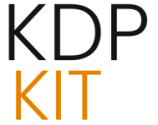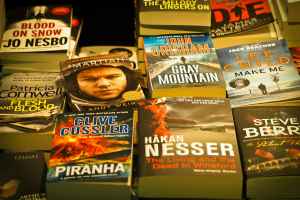Industry Stewardship and Advocacy by the SFWA in the Current Climate: The Evolving Role of Editors in 2025

The Science Fiction & Fantasy Writers Association (SFWA) in two thousand twenty-five has solidified a strategic pivot, actively broadening its focus beyond standard craft development to aggressively encompass the defense of the writer’s professional and intellectual freedoms against demonstrable external threats. The organization’s leadership and board have made it unequivocally clear that industry advocacy is inextricably linked to the very viability of their members’ creative output. When the foundation of a writer’s livelihood is threatened by external forces, the quality of the developmental edit, while crucial, can only take the work so far. Therefore, the ongoing story of developmental editing in this era is framed by the organization’s commitment to creating a resilient and inclusive creative industry where stories can be told without undue encumbrance.
Resisting External Pressures on Creative Freedom
A significant, trending development this year involves the SFWA’s proactive engagement in legal and public challenges against legislative actions impacting literary distribution and consumption. Reports highlight the Association’s joint action, such as signing onto an amicus brief on July 24, 2025, with nine other literary organizations to challenge a 2023 Iowa state law (SF 496) that would remove hundreds of books from K-12 libraries. This fight against systemic book banning is directly framed as a defense of sales channels and future acquisition viability for speculative fiction authors. The argument, which highlights the chilling effect of censorship, posits that when stories and authors are silenced, the entire industry suffers, limiting the scope of acceptable narratives that can be commissioned, thus directly impacting the work developmental editors are asked to shape. The assertion is clear: unfair and prejudicial practices that limit the breadth of accepted literature inherently place constraints on the developmental editing sector, which thrives on narrative possibility and freedom of thematic exploration.
In parallel, the defense against technological overreach has become a defining stewardship role for the organization in 2025. The SFWA, as part of the Authors Coalition of America (ACA), has been centrally involved in legal proceedings against Anthropic AI, which was trained on books downloaded from pirate websites. The organization announced in August 2025 that a court ruled this training process was not fair use, setting the stage for a trial to determine damages, with an estimated gross recovery of $3,000 per eligible work in the class action lawsuit. This legal maneuver is positioned as an essential defense of intellectual property rights, recognizing that unauthorized use of copyrighted material devalues human creative labor.
Strategic Planning and Educational Initiatives of the Association
In addition to external defense, the internal structure and educational outreach of the SFWA have seen focused attention. Strategic retreats by the Board in mid-two thousand twenty-five were dedicated to defining the organization’s forward trajectory, moving from what has been described as a period of crisis management toward clear, actionable goals. This strategic focus includes bolstering educational avenues for writers at all career stages. The introduction of specialized events, such as the entirely online professional development conference termed Quasar, shows a commitment to delivering craft education—which naturally includes best practices in story structure and character development—in accessible formats. Quasar, scheduled for November 15–16, 2025, features seminars, office hours, and keynotes by Nebula Grand Masters, demonstrating an effort to provide robust support outside the main Nebula Conference structure. The underlying message woven through these initiatives is that a well-supported, educated membership base is the best defense against industry instability, ensuring a steady supply of manuscripts ready for professional-level developmental scrutiny.
Genre-Specific Demands Shaping Developmental Critiques
The nature of the developmental edit is fluid, adapting precisely to the prevailing genres that capture the public imagination. In two thousand twenty-five, the fantasy landscape is dominated by several powerful subgenres, each imposing unique structural demands that developmental editors must master. The editorial eye must now be finely tuned not just to epic scope, but to the delicate balance required for comfort and intense emotional connection.
Navigating the Nuances of Cozy Fantasy Structure
One of the most prominent trends noted across various media is the “cozy revolution” in fantasy. This subgenre, exemplified by titles featuring orcs opening coffee shops or kindly wizards running small businesses, eschews grand battles and dark lords in favor of gentle, low-stakes narratives centered on community, comfort, and personal contentment. For the developmental editor, this shift means that the traditional pacing guide must be re-calibrated. The focus moves from escalating external conflict to perfecting the internal rhythm of community building and the resolution of micro-conflicts. Pacing, which might have been deemed slow in an epic fantasy, is now the desired cadence. The editor must ensure that the feeling of comfort is earned through consistent prose and character interaction, not simply stated, making the cultivation of atmosphere and relationship dynamics the paramount structural task.
Developmental Edits in the Romantasy Phenomenon
The continued dominance of “romantasy”—the potent blend of high fantasy worldbuilding with intense, central romantic arcs—presents a unique developmental challenge. In this space, the editor must simultaneously manage the demands of genre fiction (world logic, magic systems, adventure) alongside the strict requirements of a successful romance narrative. Plot inconsistencies are often forgiven if the central romantic tension is compelling, but a structural failure in the emotional pacing of the relationship can sink the entire novel. The developmental editor must ensure that the romance plot and the speculative plot are not merely running parallel but are deeply interwoven, with each advancement in one directly impacting the other. They must coach authors on weaving passionate subplots into sprawling adventures, ensuring that the emotional payoff lands with the same force as any climactic battle scene, a skill set demanding fluency in two distinct narrative languages.
Defining the Scope of Developmental Editorial Engagement
To fully appreciate the current coverage, it is essential to detail what this high-level editing entails and how it has been rigorously defined by established bodies like the SFWA. The industry conversation continually circles back to this foundational distinction to manage author expectations regarding cost and outcome.
Distinguishing Substantive Editing from Line-Level Refinement
Developmental editing is fundamentally concerned with the macro-level elements of the manuscript. It is the stage where the editor scrutinizes the totality of the work to identify and suggest remedies for structural difficulties, flagging poor pacing, thematic drift, or under-developed core concepts. This is distinct from the subsequent line editing process, which operates at a granular level. Line editing concerns itself with the micro-level flow: refining paragraph construction, enhancing sentence structure, ensuring rhythmic quality in dialogue, and polishing word choice for maximum impact. The developmental editor is concerned with what the story says and how it is structured to say it most effectively; the line editor is concerned with the inherent musicality and clarity of how each individual sentence performs its duty within that structure.
The Author-Editor Relationship: Collaboration vs. Prescription
A recurring theme in recent editorial discussions is the necessary approach an author must adopt when receiving such comprehensive feedback. It is emphasized that an editor’s suggestions, while informed by experience and training, are precisely that: suggestions. An editor is adept at diagnosing problems and proposing solutions, but they cannot inject a “magic fix” into flawed material. There is no formula for producing a bestseller, and an editor cannot transform a fundamentally weak manuscript into a strong one; they can only work with the existing potential. Therefore, a collaborative posture is paramount. The author must treat the editorial engagement as a chance to hone their own critical faculties, absorbing the why behind the editor’s notes rather than blindly accepting the what, ensuring they do not fall into the trap of expecting a finished, perfect product delivered back to them after the editorial pass.
The Author’s Crucible: Mastering the Iterative Revision Cycle
The practical application of developmental feedback is not instantaneous; it is a measured, multi-stage process that authors in the speculative fiction sphere are increasingly urged to embrace. The prevailing advice from successful practitioners focuses on systematic detachment and phased revision, recognizing that editorial notes often necessitate substantial, sometimes frightening, reconstruction.
The Essential Prerequisite of Post-Draft Mental Detachment
A crucial, often overlooked, first step in translating editorial notes into meaningful revisions is the mandatory break between finishing the first draft and commencing the edit. When an author is too close to the material—having been immersed in the minute details during the initial creation—their vision remains clouded. This mental fatigue prevents objective assessment of the manuscript’s overall success. Expert advice suggests that authors actively cleanse their mental palette by dedicating time to entirely different creative endeavors, perhaps drafting a short story or outlining a completely new novel. This reset allows the author to return to the manuscript with ‘fresher eyes,’ enabling them to perceive the narrative flaws the developmental editor has illuminated with far greater clarity and less emotional resistance.
Structural Overhauls in the Second Draft Stage
The second draft is universally identified as the phase where the true developmental work takes place, characterized by massive structural remediation rather than mere polishing. New writers often approach early reader or editor feedback with the expectation of minor, one-percent tweaks, leading to significant frustration when faced with notes suggesting drastic action, such as excising entire chapters or reworking significant narrative sections. The developmental editor’s primary focus at this stage is on the “big picture” adjustments: solidifying the timeline, ensuring character motivations align with their actions across the entire arc, and restructuring scenes for optimal dramatic impact. This stage demands courage and a willingness to dismantle and rebuild, often requiring the creation of quick chapter summaries to map out the existing structure before attempting the deep, often messy, renovation required to integrate the developmental feedback effectively.
Navigating Manuscript Scale and Complexity in Worldbuilding
Fantasy literature, by its very nature, often involves the creation of intricate, self-contained universes. In two thousand twenty-five, as genre epics continue to swell in ambition, the developmental editor must also grapple with the logistical challenge of scale, a factor that directly impacts the workload and the required depth of continuity analysis.
The Exponential Challenge of Scaling Epic Narratives
One persistent technical observation within the fantasy writing community concerns the relationship between word count and editorial labor. It is frequently noted that increasing a manuscript’s length does not equate to a linear increase in editing difficulty; rather, the challenge often grows exponentially. A transition from an eighty-thousand-word manuscript to one approaching one hundred and sixty thousand words, for instance, is rarely double the work for an editor; it can demand three or even four times the sustained focus required for consistency checks, thematic tracking, and managing the proliferation of subplots. This reality heavily informs current developmental advice, often steering newer fantasy authors to keep the initial scope contained, allowing them to master the revision process on a smaller canvas before attempting to wrestle with the logistical complexities of sprawling, continent-spanning epics.
Feedback Management: Staggering Input for Maximum Efficacy
The complexity of large manuscripts also necessitates a strategic approach to feedback intake, a tactical element frequently discussed in professional development circles. When an author has the resources to engage multiple early readers or beta testers, the best practice is emphatically not to deliver the manuscript to all reviewers simultaneously. A staggered approach allows the author to process and integrate the feedback from one cohort before exposing the revised manuscript to the next. For example, a smaller group reviews Version A, the author implements those changes, and then a different group reviews Version A-Revised. This phased development allows for much faster iteration on the most pressing structural issues identified in the initial read, preventing the author from becoming paralyzed by a deluge of contradictory or overwhelming notes from too many sources at once.
The Shifting Economics of Editorial Investment for Authors
The business side of publishing, which development editors are deeply integrated into, is undergoing a significant transformation in two thousand twenty-five, impacting how authors are compensated and how they budget for professional editorial support. These changes create ripple effects felt directly in the pre-acquisition phase of editing.
Rethinking Traditional Publishing Compensation Models
The industry is witnessing intense scrutiny over traditional author compensation, spurred by the emergence of alternative business models. The introduction of profit-share deals, where an author forgoes a traditional upfront advance payment in exchange for a significantly larger percentage of the book’s net profit, has ignited widespread discussion about fairness in the author-publisher contract [from prompt text analysis]. For the developmental editor, this shift implies a greater responsibility on the author to ensure their manuscript is as commercially viable and polished as possible before submission, as there is no advance to cushion the initial financial output. This model places more economic leverage and risk squarely on the writer, thus elevating the perceived necessity of professional pre-submission editorial work [from prompt text analysis].
Evaluating the Return on Investment for Freelance Expertise
Given the high cost associated with securing top-tier developmental editing talent, authors are increasingly tasked with a rigorous cost-benefit analysis. While agents and publishers are well aware of the prevalence of unscrupulous or under-qualified editors, the necessity for quality remains paramount for self-published authors seeking a competitive edge. The conversation evolves from simply if one should hire an editor to how to maximize the return on that substantial outlay. This evaluation centers on the editor’s ability to not just fix errors but to transfer knowledge, ensuring that the investment results in a demonstrably better final manuscript and a more capable author for their subsequent projects. The editor’s track record, specialization in genre fiction, and proven history of improving structural elements—rather than just cosmetic prose—become the metrics upon which this significant financial decision is judged. The context of the successful AI litigation, which validated the monetary value of an author’s work, further underscores the need to invest wisely in professional human development to maximize pre-publication market readiness.
Future Trajectories and Ethical Considerations in Editorial Practice
As the industry navigates societal shifts and technological advancements, the role of the developmental editor is also being pulled into emerging ethical debates, particularly concerning diversity and the use of artificial intelligence in creation and refinement. These considerations will undoubtedly define the next chapter of editorial practice.
The Imperative for Diverse Voices in Editorial Guidance
A strong current running through contemporary literary analysis is the ongoing need to enrich the publishing landscape with diverse perspectives. Developmental editors in two thousand twenty-five are increasingly expected to approach manuscripts with an acute awareness of underrepresented points of view. Whether working with an author whose background is marginalized or helping a writer from a dominant group convey an unfamiliar perspective authentically, the editor must possess the cultural literacy to guide the narrative toward nuance and away from stereotype. This moves beyond mere content check; it involves scrutinizing the thematic lens through which the world is viewed, ensuring that the narrative’s inherent biases, if present, are either intentionally explored or thoughtfully mitigated to serve a richer, more inclusive fantasy tapestry.
Establishing Guardrails Against Technological Overreach
The widespread integration of artificial intelligence tools presents a complex challenge to the integrity of authorship, a concern frequently voiced within professional writer organizations. Authors express profound worry about their intellectual property being utilized, often without compensation or consent, to train large language models, which could potentially devalue human creative labor. Consequently, the industry is seeing publishers take firmer stances on AI usage policies, culminating in major legal action in 2025. For the developmental editor, this translates into a need for transparency regarding their own toolsets and a commitment to human-centric revision. The core value proposition of the developmental editor—bringing unique human insight, empathy, and nuanced understanding of thematic depth to a story—is positioned as the essential counterpoint to automated text generation, making the human element of the editorial partnership more valuable than ever in distinguishing authentic, deeply felt narratives from synthetically generated content. The continued vigilance against practices that undermine creative compensation and authorship will remain a central, developing story for the entire editorial ecosystem.







